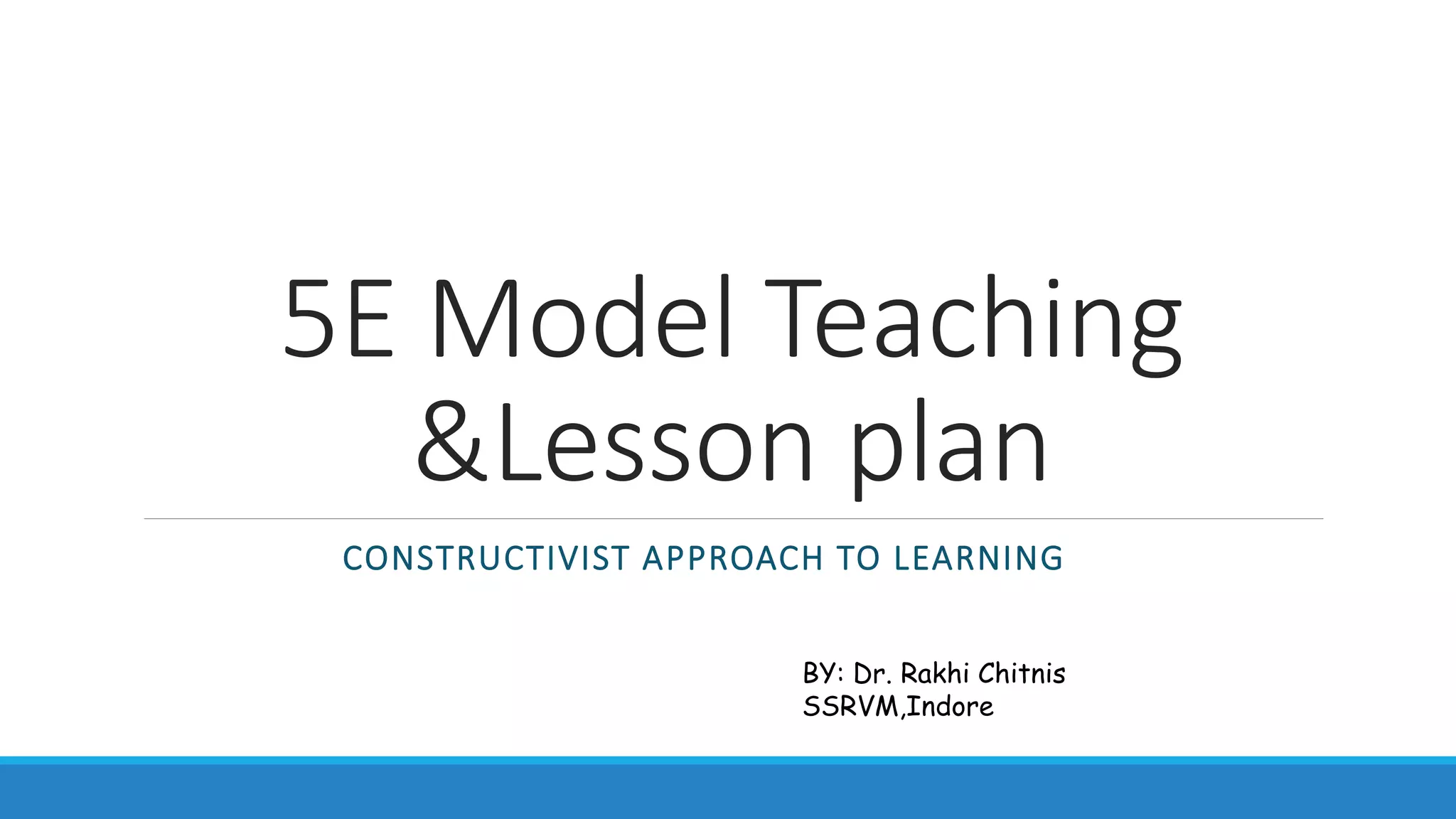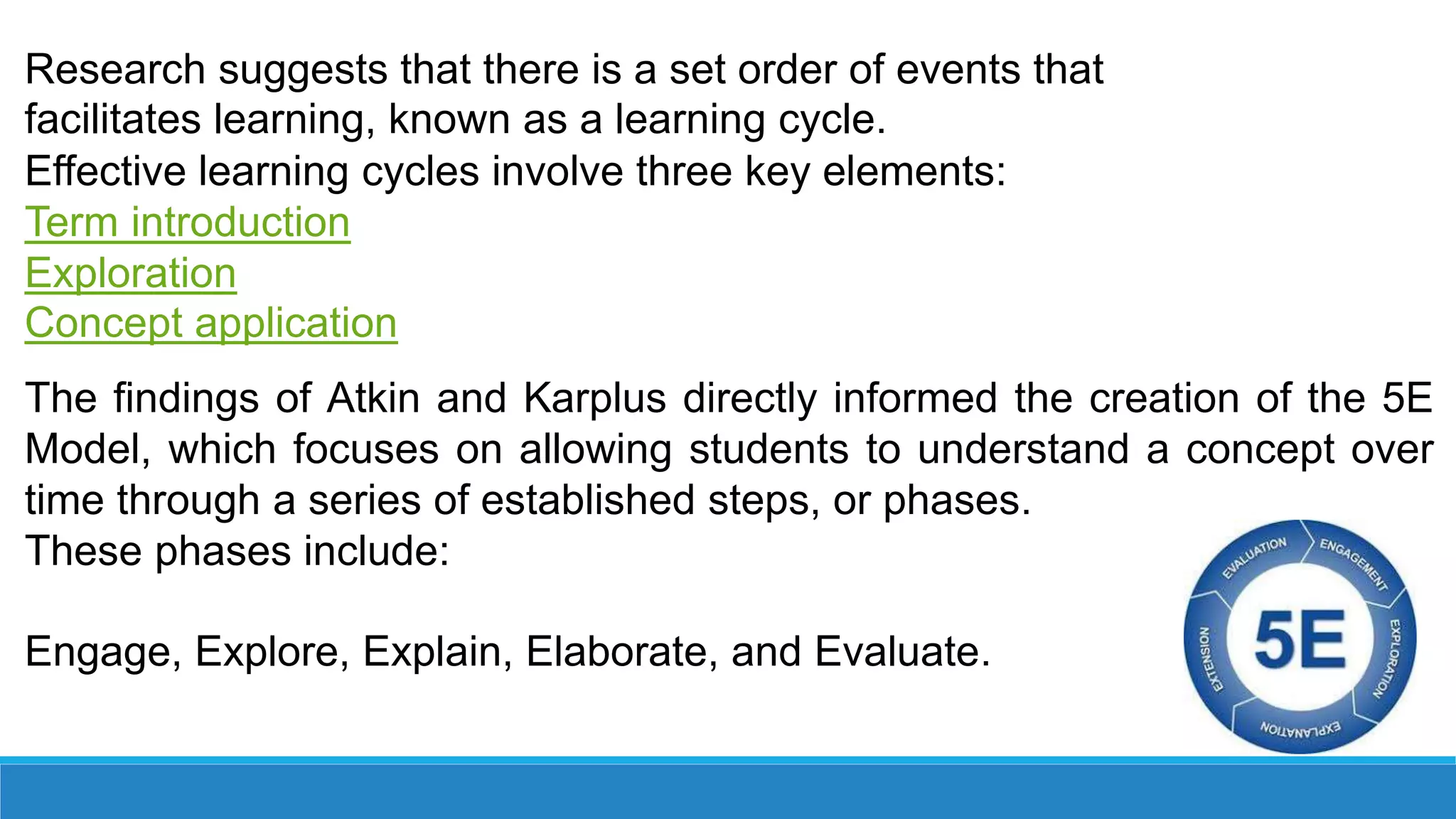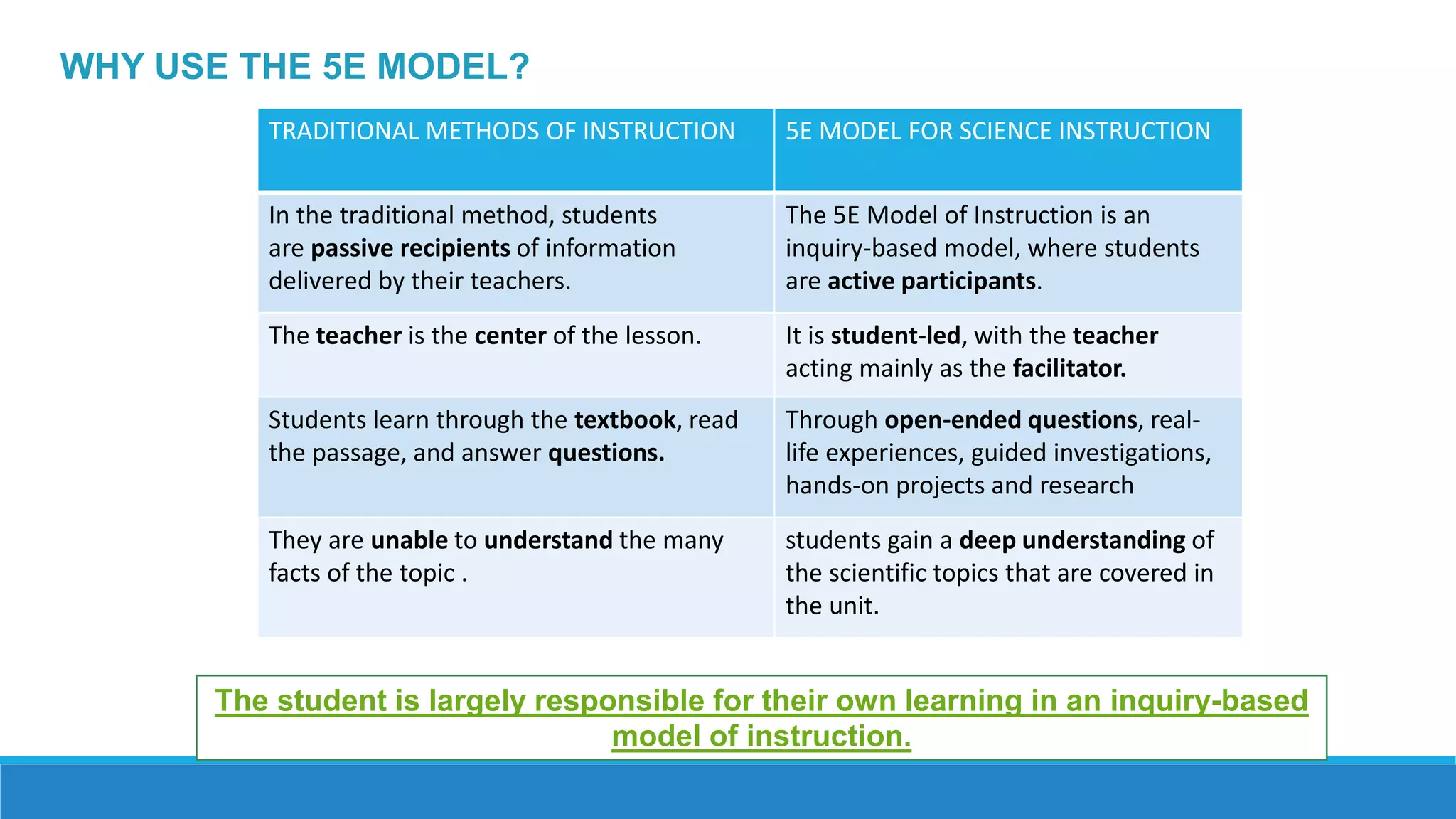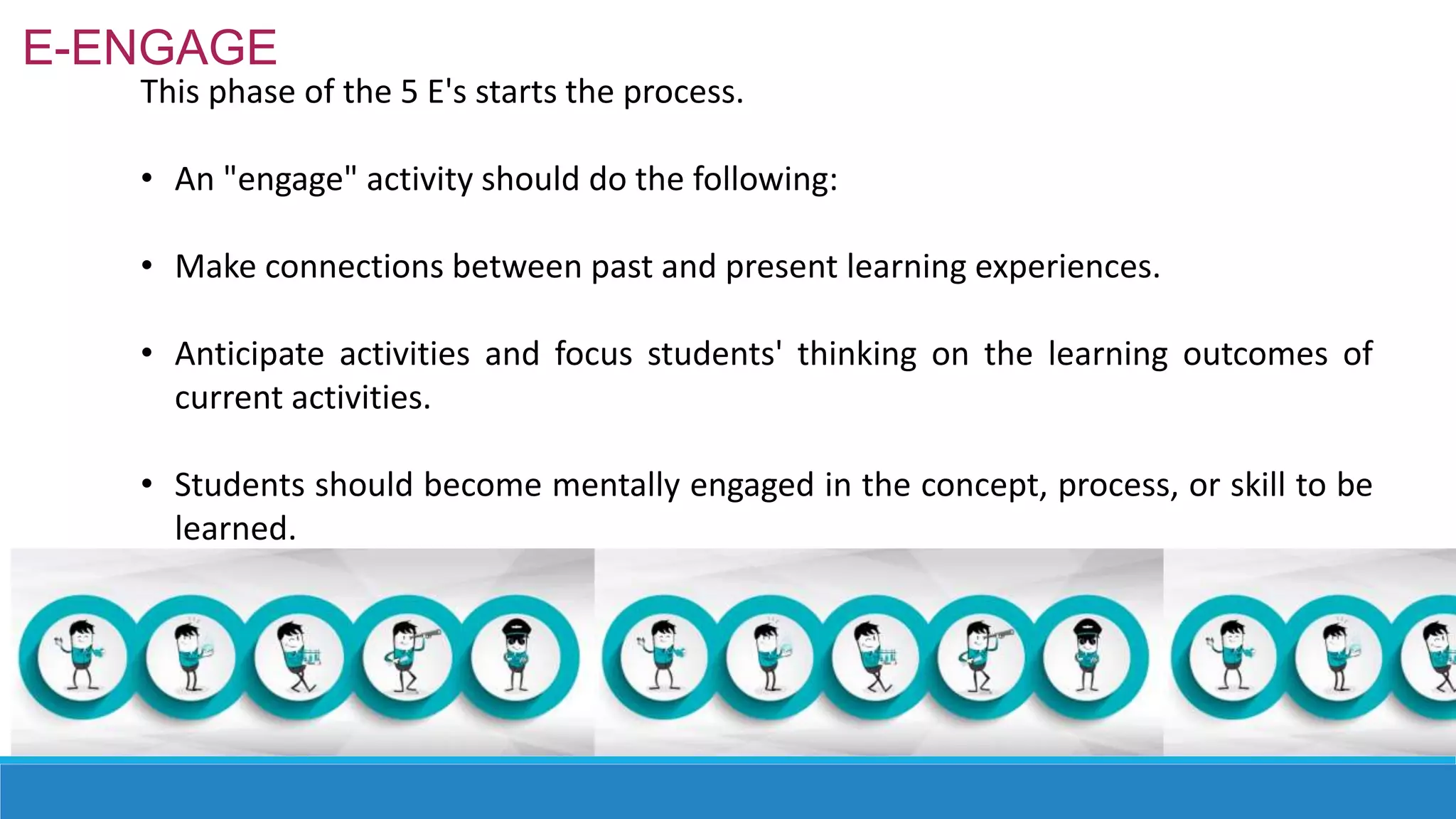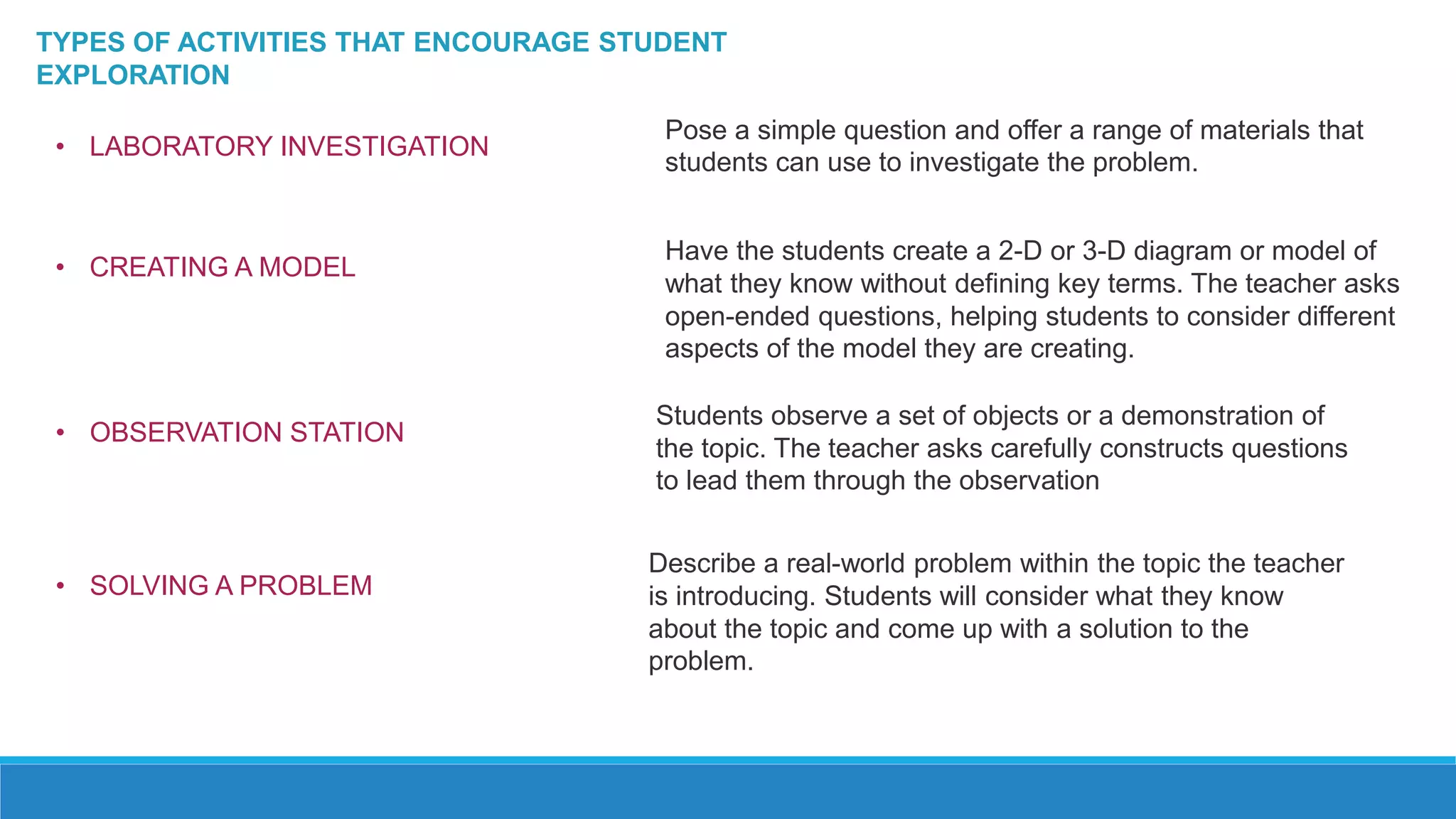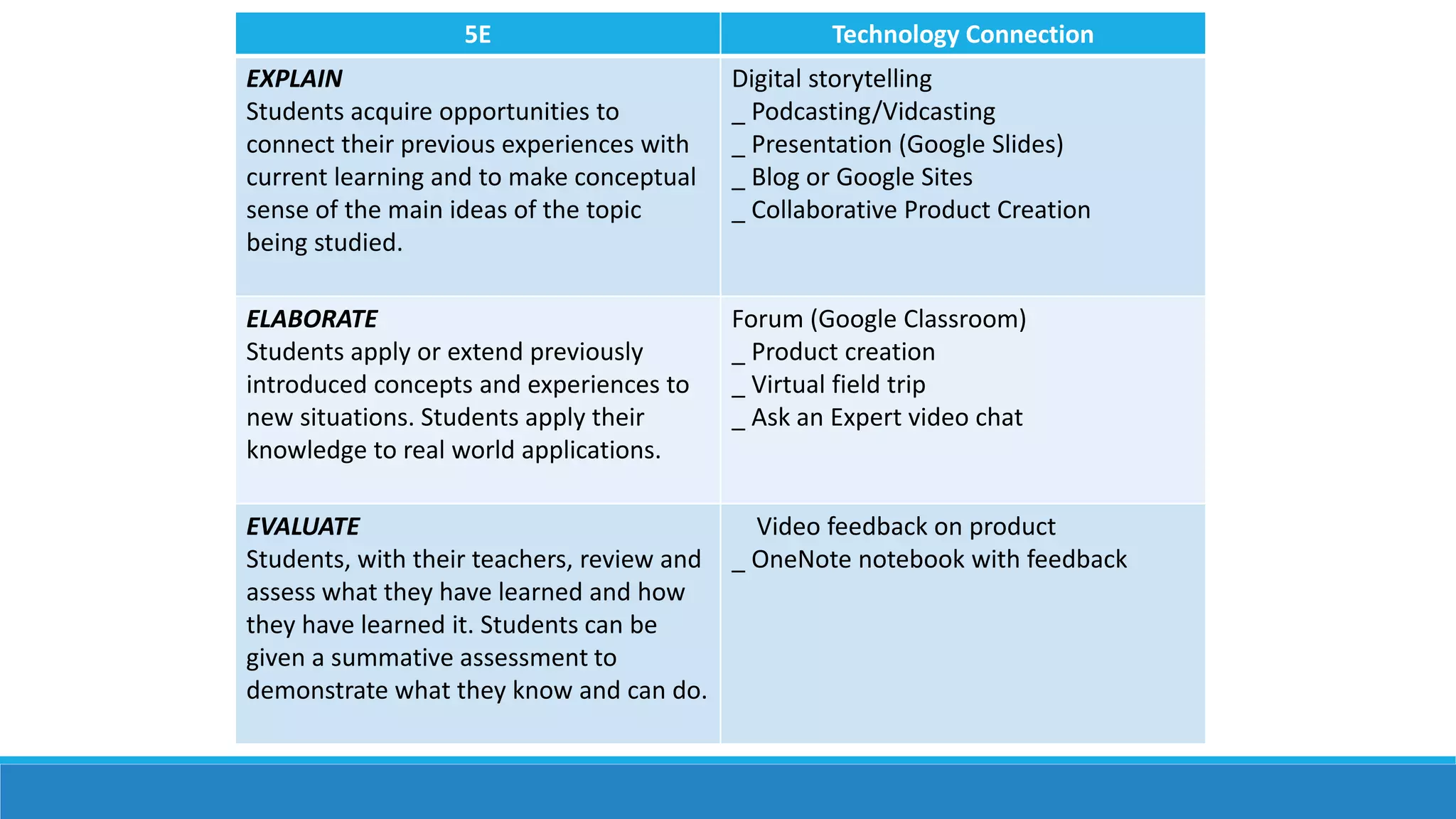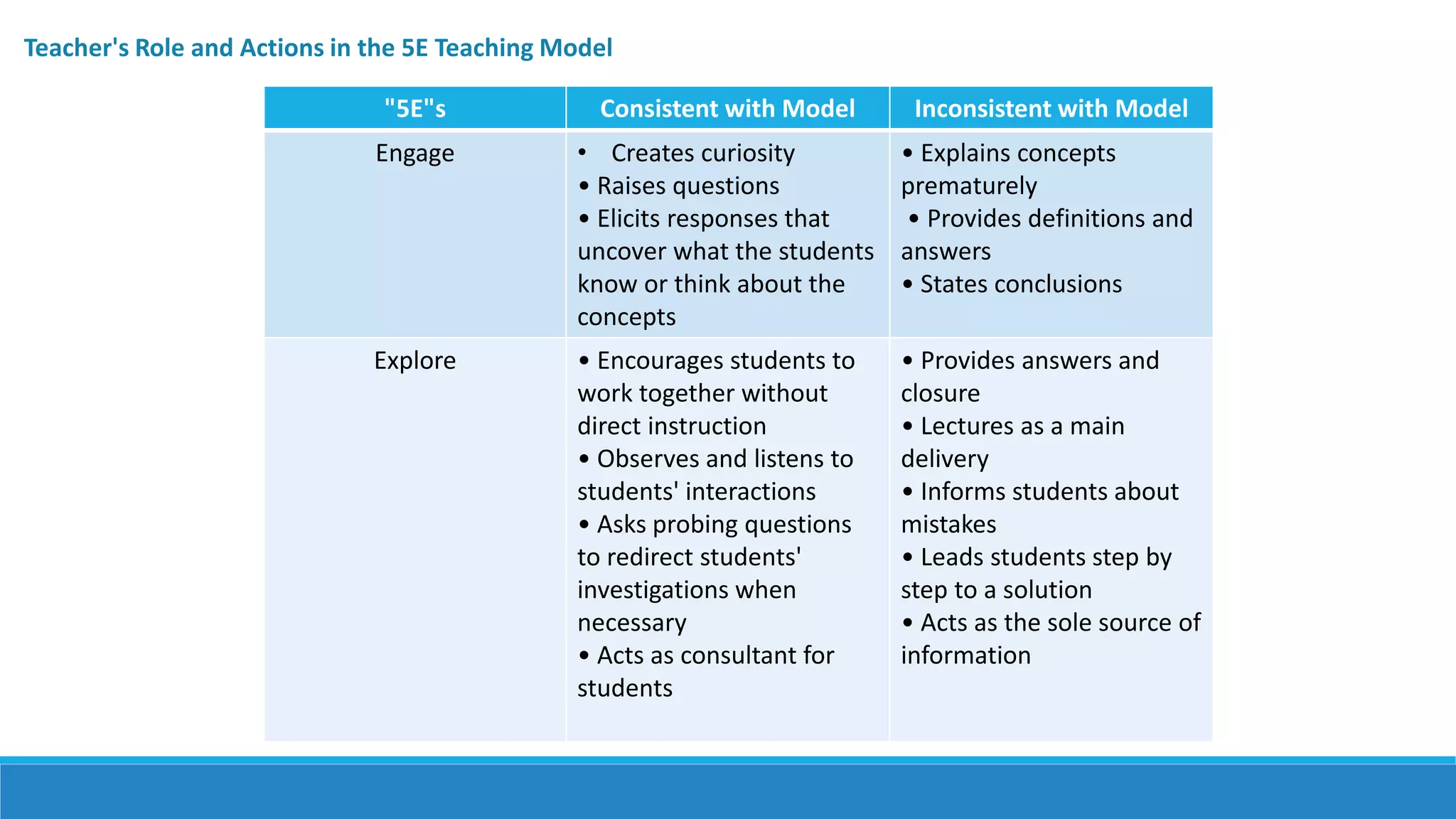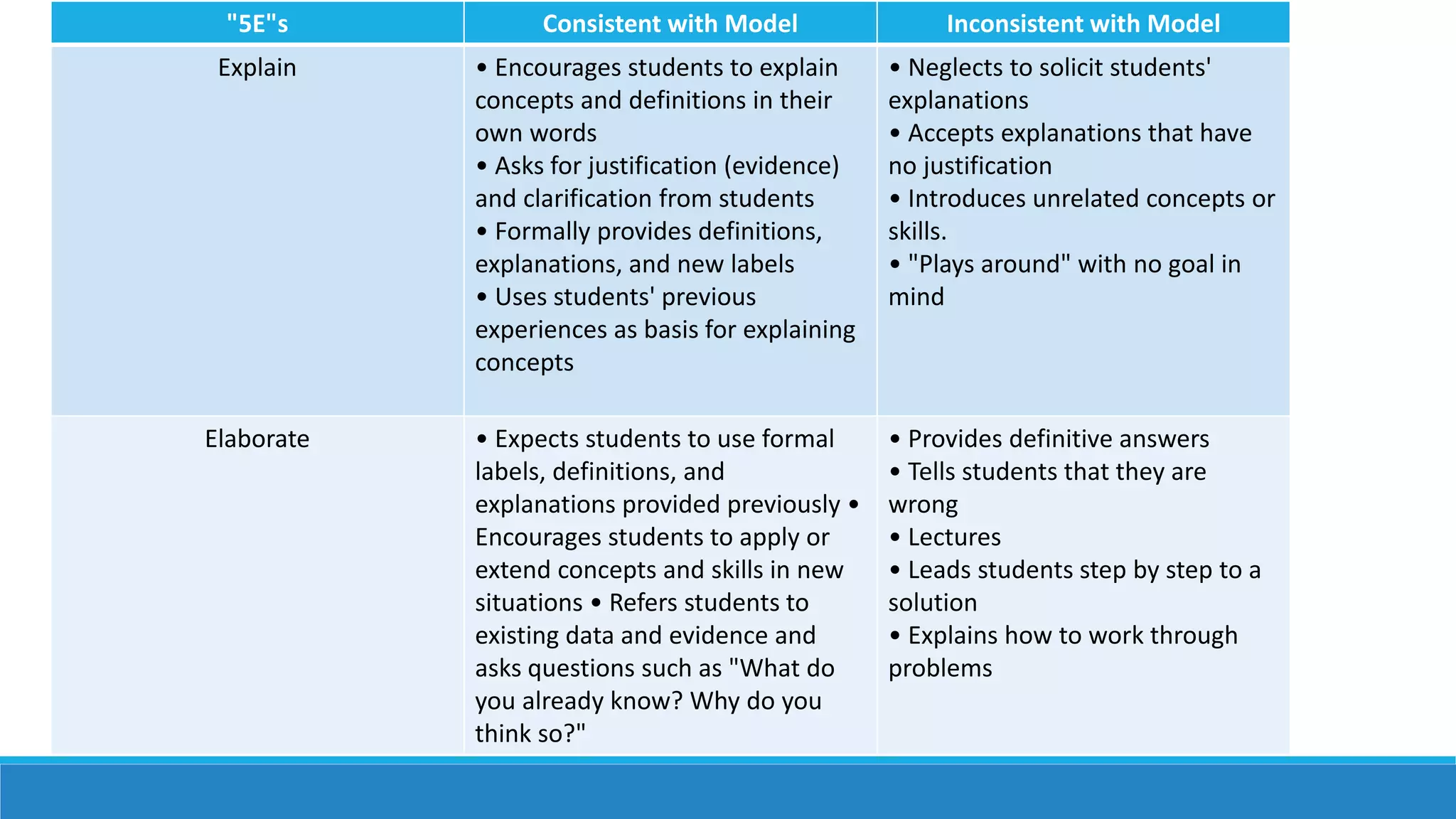The 5E model is an inquiry-based teaching model that engages students in five phases of learning: engage, explore, explain, elaborate, and evaluate. In the engage phase, teachers use activities to pique students' curiosity and get them thinking about the topic. The explore phase involves hands-on activities for students to investigate. In explain, teachers provide direct instruction and address misconceptions. Elaborate has students apply their understanding. Finally, evaluate assesses student comprehension. The document provides examples of techniques and questions to use within each phase of the 5E model to actively involve students and support constructivist learning.
